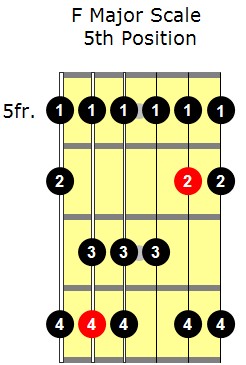 In this month’s Guitar Accelerator Song of the Month, we will look at a fun beginner to intermediate piece that will improve your alternate picking and string skipping technique.
In this month’s Guitar Accelerator Song of the Month, we will look at a fun beginner to intermediate piece that will improve your alternate picking and string skipping technique.
As with most of the technique pieces of the month, it’s probably a piece you’ve never heard before.
This is intentional.
One of the many goals of the Guitar Accelerator Song of the Month is to give you the opportunity to discover some little gems you can use to improve your guitar technique.
Many guitar players have a narrow range of listening habits. I remember, when I first started to play guitar, I had very little interest outside of rock guitar. As my playing advanced, I began to look for new challenges that would improve my guitar playing. After some searching, I discovered a virtual treasure trove of great music beyond the world of rock. This fun music can be used to improve your guitar playing too.
This month’s piece is a short Scottish piece called the “Burgess Hornpipe”. This piece will be easy to memorize and master on the guitar. And of course, the great thing is as you work on this song, you will improve your alternate picking and string skipping.
A Good Tip for Learning Songs Faster
 When you start to work on a new piece it is very helpful if you know what scale fingering(s) are used. When you already know how to play the scale fingering, all you have to do is learn the order in which the notes are played.
When you start to work on a new piece it is very helpful if you know what scale fingering(s) are used. When you already know how to play the scale fingering, all you have to do is learn the order in which the notes are played.
With the scale fingering in mind, you will automatically know the best finger to use for each note. In other words, it is one less thing to worry about as you learn a new song.
When you don’t know the scale fingering for a piece, you make it much harder and more time consuming to learn the piece.
Let’s look at the impact this can have.
Play the following excerpt 3-4 times.
Now play through the following F major scale fingering. Play it ascending and descending several times.
(The fingering below on the left shows you the correct fingers to use and the scale fingering on right shows you the letter-names of each note.)
Now play through the excerpt again and notice how all of the notes come directly from this scale fingering. This scale fingering shows you which fingers to use.
 Now you should notice that the notes in the excerpt don’t seem so random. The scale fingering helps you to organize them and therefore makes them much, much easier to memorize.
Now you should notice that the notes in the excerpt don’t seem so random. The scale fingering helps you to organize them and therefore makes them much, much easier to memorize.
Burgess Hornpipe just uses this one F major scale fingering. So play through the scale fingering a few more times and then you’ll be ready to get started on the full piece, which you will find a link for below.
 The brain loves organization when learning. If you try to learn a bunch of random, seemingly unrelated things, you will find it VERY hard to commit it to memory. But if you organize it so that the brain can easily see the relationships, you’ve just made it so much easier to learn!
The brain loves organization when learning. If you try to learn a bunch of random, seemingly unrelated things, you will find it VERY hard to commit it to memory. But if you organize it so that the brain can easily see the relationships, you’ve just made it so much easier to learn!
As you can now see, it really makes a lot of sense to learn the most common guitar scale fingerings. Not only will they improve your technique and provide you with the resources to create your own guitar solos, but they will also give you an instant memory booster every time you learn a song or guitar solo that makes use of scales you already know.
Here is the download link for the Burgess Hornpipe in guitar tab and standard notation.
Recommended Resource
 To learn the most common and important guitar scales and the most effective ways to learn and master them, check out my complete guitar scale course called Guitar Essentials: Scale Master Expanded Edition. This course will show you all the scales a beginner and intermediate guitar player needs to know. On top of that, it will show you some great ways to practice the scales and give you an understanding of how scales really work.
To learn the most common and important guitar scales and the most effective ways to learn and master them, check out my complete guitar scale course called Guitar Essentials: Scale Master Expanded Edition. This course will show you all the scales a beginner and intermediate guitar player needs to know. On top of that, it will show you some great ways to practice the scales and give you an understanding of how scales really work.




